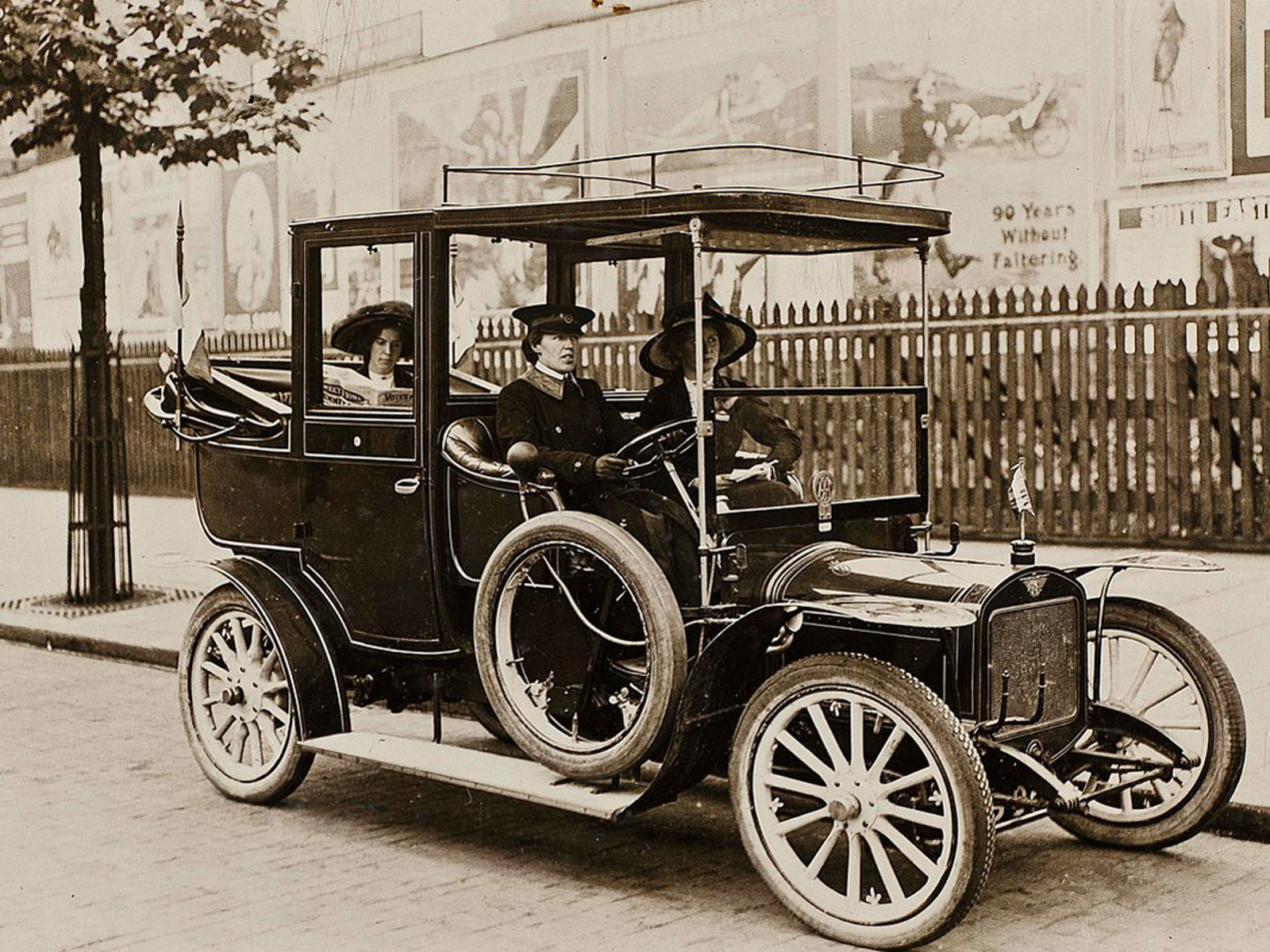
Chauffeurs
Explore the stories of pioneering female chauffeurs and their role in the suffrage movement.
Muriel Thompson
Muriel Thompson (1875-1939) was born into a wealthy Scottish family where gender was not a restricting factor in life; she took up driving at a young age, and soon became the driver of her family car. Thompson gained a prominent status in women’s motor racing, winning numerous competitions.
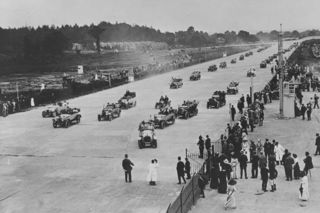
Most notably, on 4th July 1908, she won the Ladies’ Bracelet Handicap, Brooklands’ first ever ladies’ motor race. Previous to this, the Brooklands Automobile Racing Club was extremely resistant to the idea of women racing. Following the race, as enthusiastic crowds surrounded Thompson, a suffragist cried “Women deserve the vote now!”.¹
Following her success on the track, Thompson was hired as the chauffeur for the Women’s Social and Political Union (WSPU: organisation of the suffragettes). The WSPU had bought a new car for Emmeline Pethick-Lawrence (treasurer of the WSPU and co-founder of the publication Votes for Women), who then dedicated the car to general use of the WSPU.
Thompson drove this car, an Austin with white wheels, green body, and narrow purple stripes, around the country, notably driving Emmeline Pankhurst on her national tour in 1909. Alice Paul who attended the tour commented: “Nobody had ever seen a woman chauffeur…It was unusual for a woman to drive a car but to have a woman chauffeur–!”, demonstrating the importance of the motor car in challenging male-dominated professions.²
During World War One, in January 1915, Thompson joined the First Aid Nursing Yeomanry, eager to do her bit for the war effort. She was awarded a Military Medal in 1918 for “conspicuous devotion to duty during a hostile air raid”, in which Thompson and her colleagues proceeded to clear casualties as explosions continued.³
References:
¹ Lady Motorists’ Race. Sixty Miles an Hour.’, in Clarence and Richmond Examiner, 8 September 1908 (Grafton, New South Wales, Australia), p.3.
² Alice Paul, quoted in, Amelia R. Fry, and Jill Diane Zahniser, Alice Paul: Claiming Power (New York: Oxford University Press, 2014), p.86
³War Office, ‘Supplement to the London Gazette’, in The London Gazette, 26 July 1918 (London), p.9000.
Sources:
Brooklands Museum, ‘Brooklands Women: Muriel Thompson’ [accessed 19/04/2018].
Crawford, E., The Women’s Suffrage Movement: A Reference Guide 1866-1928 [London: University College London Press, 1999], p.97.
Gosnell, C., ‘The Thompson Family’, Ocotillo Road [accessed 19/04/2018].
Women’s Local Government Society, ‘Emmeline and Frederick Pethick-Lawrence’, Suffrage Pioneers 1918-2018 [accessed 19/04/2018].
Vera 'Jack' Holme
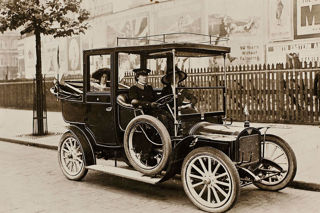
Vera Holme (1881-1969) – known by the nickname ‘Jack’ or ‘Jacko’ – was a militant suffragette, a chauffeur to the Pankhursts, a cross-dressing actress, and an overseas aid worker during and after World War One.
Using Jack Holme’s life as an example, we are able to see how events such as the women’s suffrage movement and the First World War gave women an opportunity to step outside social norms of female behaviour. Her story is documented in her personal archive (consisting of letters, diaries, press cuttings and photographs), currently held at the Women’s Library at the London School of Economics (LSE).
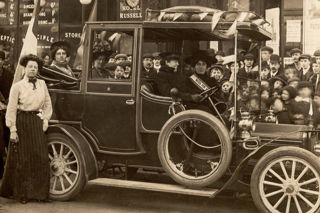
Frustratingly, no diaries survive between 1904 and 1914 meaning that we are uncertain of the origins of her involvement in the women’s suffrage movement. From other records, we know that by 1909 she was an active militant member of the Women’s Social and Political Union (WSPU).
Holme joined the Actresses’ Franchise League and a group of singing suffragettes who performed at the gates of Holloway Prison to boost the morale of suffragette prisoners inside.
Her key role in the suffrage movement was as chauffeur to the Pankhursts, accompanying them on tours around the country. She holds the honour of being Britain’s first female chauffeur, as documented in the industry magazine, The Chauffeur, in 1911.
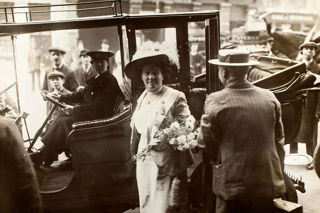
Whilst active in the suffrage movement, Holme began an important love relationship with Lady Evelina Haverfield. In 1915, Holme and Haverfield joined the transport wing of the Scottish Women’s Hospital (SWH) unit.
Both were sent to Serbia, where Haverfield was head of the transport unit, and Holme an ambulance driver. Holme spent 1916-17 in Russia and Romania as a driver and ‘master of the horse’. Once home, she spent the remainder of the war giving fundraising lectures on the work of the SWH.
Into later life, Holme became involved in her local Women’s Institute. She died in a nursing home in Glasgow in 1969, aged 88.
Sources:
Kisby, A., “Vera ‘Jack’ Holme: cross-dressing actress, suffragette and chauffeur.” Women’s History Review 23:1 (2014): pp.120-136.
Murphy, G., ‘Vera ‘Jack’ Holme – one of the stars of the Women’s Library Collection’, The London School of Economics and Political Science [accessed 19/04/2018].
Credits:
Images courtesy of the Women’s Library at the London School of Economics (The Women’s Library, LSE/Flickr)
Charlotte Marsh
Charlotte Marsh (1887-1961) joined the WSPU in March 1907, becoming militantly active in 1908 on completion of her training as a sanitary inspector.
Her training opened her eyes to the harsh struggles women were experiencing and she wanted to take action.
According to historian Martin Pugh, Marsh applied for the job of chauffeur for Emmeline Pankhurst’s new WSPU car in 1909. However, she lost out to Vera Holme. Despite this, there were occasions where Marsh was brought in to drive for Mrs. Pankhurst.
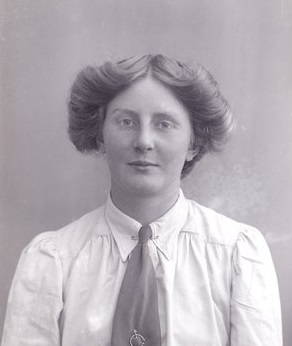
Charlotte Marsh, 1911 (Bath in Time/WikiCommons)
In 1910, Marsh became the WSPU organiser in Oxford, and subsequently Portsmouth and Nottingham. She was an active member of the militant movement, disrupting meetings and smashing windows. She was arrested multiple times, and in March 1912 was sentenced to six months imprisonment for smashing nine windows at the Strand. Throughout her time in prison she went on hunger-strike and was forcibly fed.
When Britain went to war in 1914, the WSPU declared a ‘truce’ with the government, focusing their attention on the war effort. Marsh accepted this policy and began work as a motor mechanic, and later became chauffeur of David Lloyd George, who supposedly told her it would help the cause of women’s enfranchisement. During the war, she also worked as a land girl, whilst continuing her commitment to suffrage as an honorary secretary of the Independent WSPU.
Sources:
Cook, B., ‘Shades of Militancy: the forgotten Suffragettes’, Museum of London [accessed 19/04/2018]
Oakley, A., Father and Daughter. Patriarchy, Gender and Social Science (Bristol: Policy Press, 2014), p.115.
Pugh, M., The Pankhursts: The History of One Radical Family (London: Vintage, 2008), p.153.
Aileen Preston
Aileen Preston (Married: Graham-Jones) was the first woman in history to qualify for the Automobile Association Certificate in Driving. In 1962, she told the BBC that she believed she was “the first woman to take up motoring as a career”, as both a qualified motor mechanic and driver seeking work.¹
She also commented that social standards were different back then, and so when she announced her career choice there was much disapproval. Despite this, as she began to show that she was truly serious about her career path, men started to support her.
In the summer of 1911, Preston advertised her services in an advertisement column of the Morning Post and Votes for Women: “Lady Chauffeur, RAC certificate, can do running repairs. What offers?”.² In response to this, she was hired by Clement’s Inn to drive Mrs. Pankhurst, of the WSPU, around in a forty-horse power Wolseley, donated by Mary Dodge, at the rate of £1 per week. When Preston’s family heard of the job they were horrified at the thought of Preston spending time with “that dreadful woman”, Emmeline Pankhurst, nevertheless Preston loved her job.³
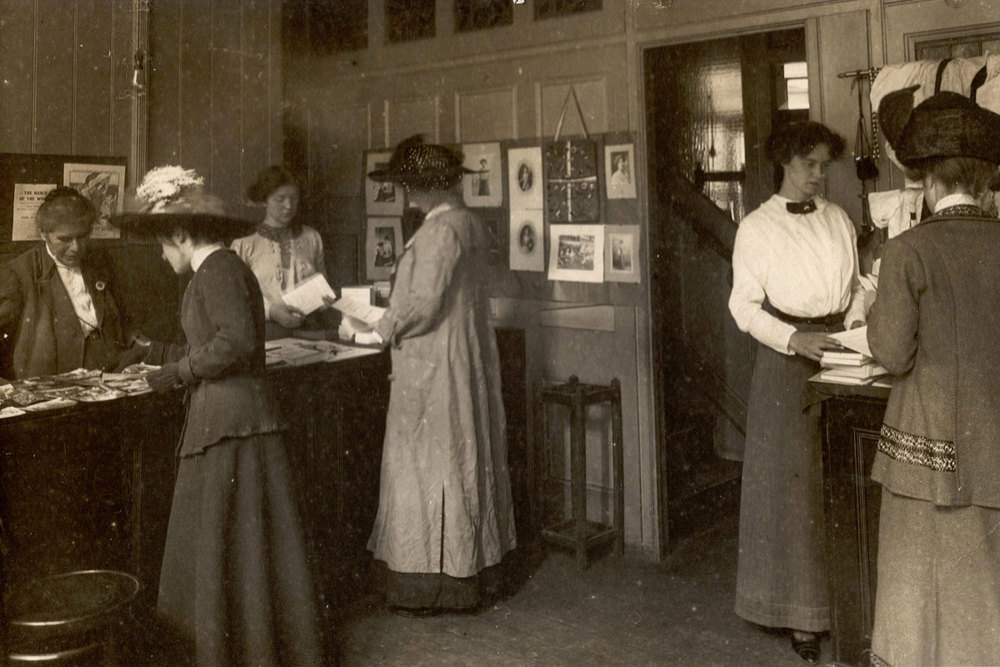
The drive was a difficult one for Preston, who endured few tarmacked roads, dust, over-heating engines and bursting tyres, in the very hot, dry summer that year, but she quickly learnt that come what may Mrs Pankhurst must be at her meeting on time. When Preston drove through the Lake District, she had to be careful not to overuse the brakes on the descents in Kirkstone Pass. Ultimately however, the journey back to London was too great a challenge, and after five punctures, the car was abandoned, and the women caught the train.
At this point, the motor car was still a risky method of travel, and a competent chauffeur was expected. Being the first woman to gain her Driving Certificate, Preston marked the beginning of an age of women’s freedom and women’s ability to move into a position of control – the driving seat.
Preston was also the first person to start a ladies’ motor school in London. She would be busy with pupils every day of the week from 10am-1pm, and 2pm-5pm. In 1913, The Motor emphasised how the idea of being taught to drive by another woman was a popular one; men were often “impatient”.⁴ Preston’s driving school soon became recommended by the R.A.C., and became so oversubscribed that she took up a partner. Whilst a lot of students enrolled for leisure purposes, many did so to take up motor driving professionally.
In World War One, as the war became more pressing, male ambulance drivers were required by the army on the front line, as a result women were hired as drivers to handle rear-line journeys in British sectors. Records show that in April 1916, Preston was put in charge of the first autonomous British women’s ambulance unit. Assigned to a large base hospital in North France, Jones had thirteen women driving for her, travelling up to 130 miles per a day.
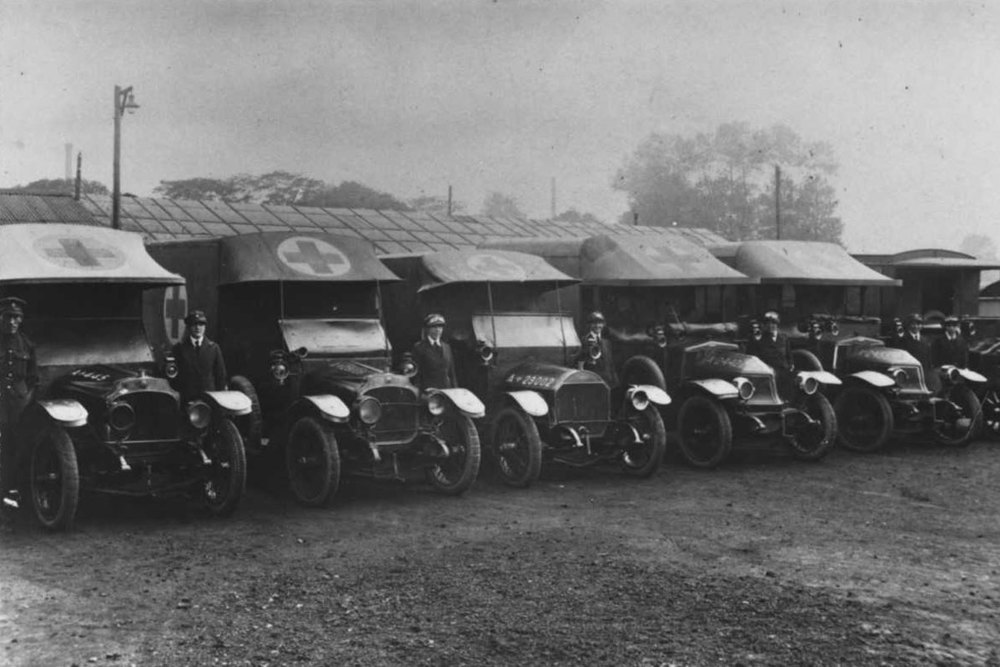
References:
¹ Aileen Graham-Jones, on ‘Women’s Hour’, BBC Radio4 (1962) [accessed 18 April 2018]
² Aileen Preston, Morning Post, and Votes for Women (1911), quoted in Atkinson, D., Rise Up Women!: The Remarkable Lives of the Suffragettes (London: Bloomsbury Publishing, 2018).
³ The Preston Family, 1911, quoted in June Purvis, Emmeline Pankhurst: A Biography (London: Routledge, 2002), p.158.
⁴ The Motor, ‘News and Notes. Lady Drivers’, in The Motor (30 September 1913), p.362.
Sources:
Atkinson, D., Rise Up Women!: The Remarkable Lives of the Suffragettes (London: Bloomsbury Publishing, 2018).
Graham-Jones, A., on ‘Women’s Hour’, BBC Radio 4 (1962) [accessed 18 April 2018]
Pugh, M., The Pankhurst’s: The History of One Radical Family, Vintage (2008) pp.227-228.
Purvis, J., Emmeline Pankhurst: A Biography (London: Routledge, 2002), p.158.
The Catholic Citizen, ‘Driving Mrs. Pankhurst. From a B.B.C. broadcast by Mrs. Aileen Graham-Jones’, The Catholic Citizen, Vol.49, (15th January 1963), p.92.
The Motor, ‘News and Notes. Lady Drivers’, in The Motor (30 September 1913), p.362.
The Motor, ‘Professional Lady Motorists and Engineers’, in The Motor (30 June 1914), pp.1021-23.
Norah Smyth
Norah Smyth (1874-1963), the niece of famous composer and great friend of Emmeline Pankhurst, joined the WSPU in 1912. Within the WSPU she participated in various roles including becoming an unpaid chauffeur for Emmeline Pankhurst. She was uniquely able to take this position as a result of her wealthy family; it was this wealth that allowed her to procure a motor car, have driving lessons, and, ultimately, assume an unpaid position. During her time, Norah Smyth was befriended by Sylvia Pankhurst and accompanied her on many trips around the country.
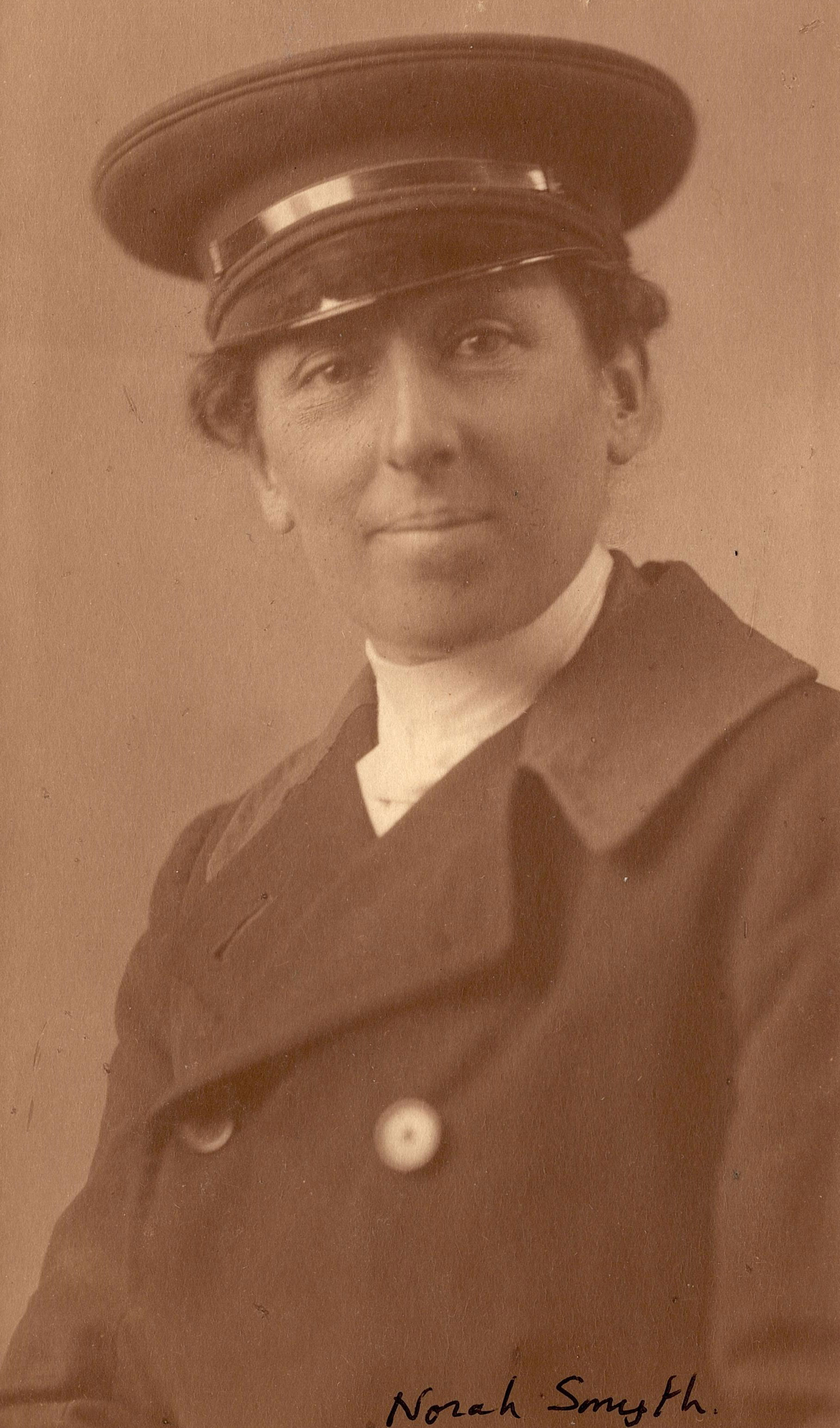
Norah Smyth (The Women’s Library, LSE/Flickr)
Following Sylvia Pankhurst’s imprisonment in Holloway jail, Smyth helped her to escape on various occasions. Pankhurst recorded that on one occasion she dressed in nurse’s clothing and stepped into a car that was waiting for her with Smyth as the driver. Pankhurst recorded in her book, The Suffragette Movement, that Smyth was often “waiting with a car” for her when needed.¹ The use of the motor car to help women escape from police captivity highlights an element of mischievousness that was associated with female drivers at the time. Despite this, it was also innovative; it took initiative to use their access to new technology and motor cars to their advantage to overcome challenging situations.
Pankhurst also explains in her book the opportunities a motor car provided for individuals like Smyth. As well as enabling Smyth to help her friend, the motor car also allowed her to “drive with speed” to parliament and other political locations, demonstrating the significant role the motor car played in the movement, alongside presenting a sense of commitment and dedication to the cause with the hope of being taken seriously.²
Although Norah Smyth was a keen photographer, unfortunately there appears to be almost no images of her and her role in the movement.
References:
¹ Sylvia Pankhurst, The Suffragette Movement: An intimate account of persons and ideals (London: Virago Press, 1977), p.506.
² Sylvia Pankhurst, The Suffragette Movement: An intimate account of persons and ideals (London: Virago Press, 1977), p.570.
Sources:
Pankhurst, S., The Suffragette Movement: An intimate account of persons and ideals (London: Virago Press, 1977).
Robinson, J., Hearts and Minds, The Untold Story of the Great Pilgrimage And How Women Won the Vote (London: Penguin Random House, 2018).

Subscribe for updates
Get our latest news and events straight to your inbox.